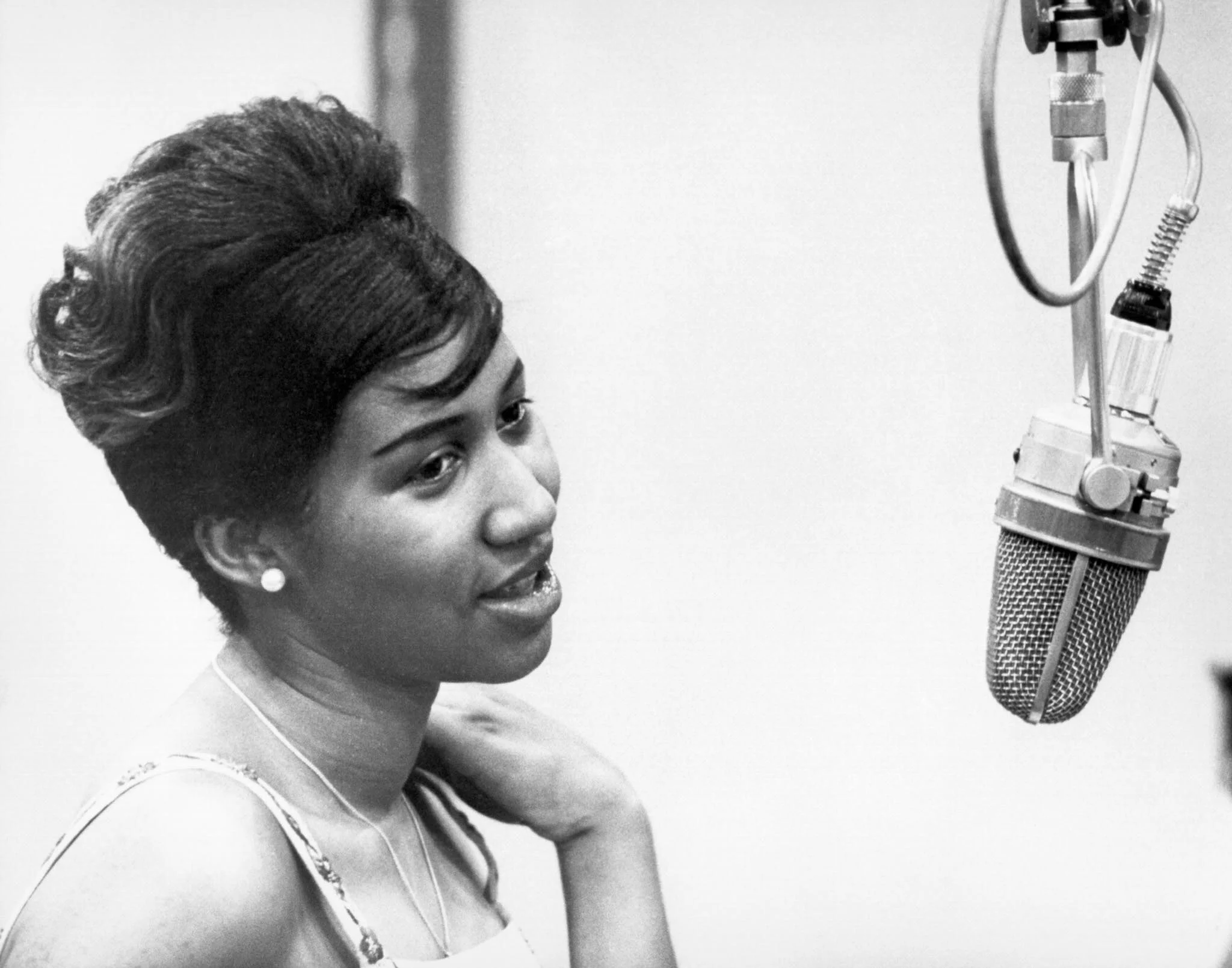Aretha Franklin
What’s the deal with Bernard Purdie’s beat on Aretha Franklin’s “Rock Steady”? Seems like everyone wants to know how to play that beat. And what about his classic drum break in the same song which includes his signature hi-hat bark? That’s one of the most recognizable funk licks of all time.
Let’s “get up and get into it,” as James Brown would say.
“Rock Steady” combines a super solid groove (thus the name of the song) and some classic funk techniques with an extra special twist.
Here’s my take on it.
Building The “Rock Steady” Beat
1 - Right Hand Hi-Hat Pattern
Let’s start with the hi-hat pattern. Fairly simple: two 8ths, plus one 8th and two 16ths, a la James Brown’s “Soul Power” with Jab’o Starks on drums.
It’s easy to hear the hi-hat pattern as straight 8ths but there’s more going on. My friend Chuck Silverman hipped me to this. (More on this later.) Those two 16ths add more drive and help to hold the beat down in the pocket. This hi-hat pattern is the basic framework for the beat.
2 - The Pattern For Both Hands
Let’s first work on the pattern for both hands by adding the left hand snare drum pattern to the right hand hi-hat pattern.
You may not be familiar with playing a ghost note after a back beat. This is not easy to do but it’s really an essential part of the funk vocabulary so you may have to spend some time shedding it. Let that ghost note just fall or bounce onto the head as you bring your left wrist up after the accented backbeat. Don’t worry about the ghost note volume. It should be super soft anyway. Just let the stick graze the head.
Don’t go on until this hand pattern is really flowing nicely. I’ve found this to be the key to mastering some of the more complex funk beats. Get the hand pattern down first, and then we’ll add the bass drum pattern underneath.
3 - Adding The Bass Drum
Now we can add the bass drum to the hand pattern.
Bernard Purdie from Jim Payne’s Give The Drummers Some!
4 - Adding The Hi-Hat Opening
Here comes the special twist… adding the hi-hat openings. At first it sounds like Bernard is just opening the hi-hat on the “and of 1” and the “and of 3”… simple, right? Not quite.
Then you start to notice something different lurking in there somewhere. There’s something else going on. There’s a slight accent on the “ah of 2” and the “ah of 4” that goes along with the hi-hats on the same notes.
Once in a while you can hear a slight hi-hat opening in those same spots.
Hmmm… that’s tricky, you say. That’s what I thought, too. Then I started working on this and tried opening the hi-hat on the “ah of 2” and the “ah of 4” to get this effect. It didn’t flow very well.
Then BREAKTHROUGH: Finally, I realized that you could get this sound by simply playing the left foot in quarter notes throughout! This was the trick that my friend Chuck Silverman showed me. Play the hi-hat in quarters with the left foot and play the right hand pattern on top. The hi-hat openings take care of themselves! Bingo… the secret twist.
BUT… there’s one more thing. To really make this beat happen you then have to ACCENT the hi-hat openings on the “and of 1” and the “and of 3”, and not make much of the openings on the “ah of 2” and the “ah of 4.” It’ll take a while but you’ll get it.
And that’s all there is to it. Except, of course, playing it slow, and playing it over and over, and playing it in all the combinations: right hand; right hand and left hand; right hand, left hand and bass drum; then everything at once. You can’t get away without doing that! That’s the real secret, persistence.
Jim with Bernard Purdie
5 - Extra Added Attraction: The Drum Break
Here’s the “Rock Steady” drum break written out.
Right hand goes to the ride cymbal and plays straight 8ths as far as I can hear. I don’t claim to get all this stuff perfectly. There’s a lot going on in the percussion section, all the instruments and, of course, Aretha’s vocal.
6 – “Rock Steady” Song Form
It turns out the first bridge in the tune has almost the same pattern as the drum break but with only one backbeat on 2 in each bar. Same Purdie hi-hat lick on beats 3 and 4 in the 4th bar.
The second bridge is similar but a little simpler with backbeats on 2 and 4 and no lick in bar 4. Gotta save that for the drum break!
7 – Jim Plays to the “Rock Steady” Track w/o drums
Workbook
Play along to the “Rock Steady” Track without drums.
Get the main beat and the drum break as close as you can.
It doesn’t have to be note-for-note on the bridge but make it as close as you can.
Good luck, it’s worth it. Thanks Bernard!










